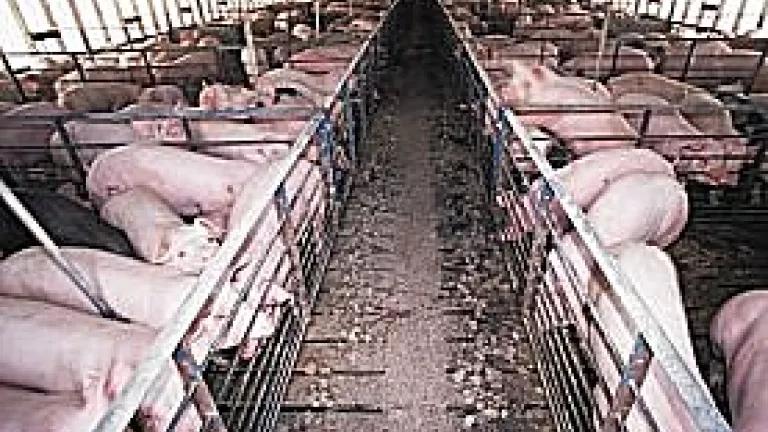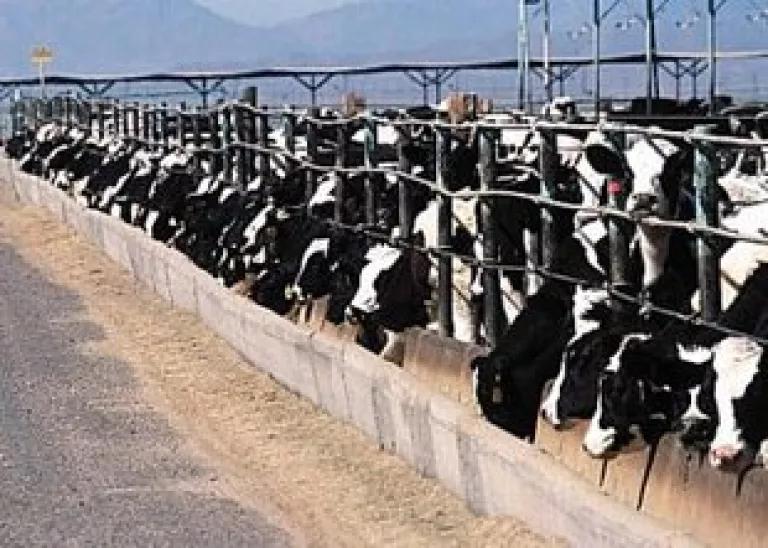
Cowboys have known for years to “always drink upstream from the herd.” And although the lone, Stetson-wearing cowpoke roaming the prairie is becoming as rare as the jackalope, his advice is as poignant as ever-- animals poop, and their manure carries bacteria, viruses and other contaminants that pollute water and can make people sick.
Unfortunately, for most Americans, there is very little information available about where “the herd” is, or if their favorite swimming holes happen to lie downstream. A majority of animals are now raised in industrial livestock facilities, known in the regulatory world as Concentrated Animal Feeding Operations, or CAFOs. The Environmental Protection Agency estimated that these operations generate approximately 300 million tons of manure each year, more than the amount of trash produced by all Americans. However, although some states collect piecemeal information about CAFOs, there are no comprehensive data about the size, location, or waste management practices of the U.S. livestock industry.
Without key information about the industry, the federal government’s watchdog, the Government Accountability Office, observed, “EPA does not have the information that it needs to effectively regulate these operations.” So, under pressure from NRDC and our partners, EPA agreed to initiate an effort to get a handle on the industry’s true risks to water, by proposing to collect some basic operating information from CAFOs. Unfortunately, EPA, cowed by the livestock industry, chickened out. (Sorry – this stuff is extremely pun-worthy.)
In our submitted comments (click on the little “PDF” button next to “Comment”), NRDC and several other groups argued that EPA’s proposed inventory would collect far too little information. As proposed, EPA wouldn’t even ask CAFOs to report what steps they take to prevent leaks and spills or whether any manure is transferred off-site, putting even more waters at risk than just the ones in the immediate vicinity of any given CAFO.
Despite the weak proposed survey, the livestock industry had a cow (see?) about EPA’s proposal. But this is ludicrous. For one, it would impose virtually no burden on operators, despite their huge environmental footprint. EPA estimated that responding to the proposed survey would take one hour every 10 years – a pittance compared to what other industrial pollution sources have to do. Even if EPA strengthened the requirements and made operations submit more regularly – which it should – the effort would be modest.

In addition, collecting basic information will not reveal industry secrets. The number of and kinds of animals confined, the waste they produce, and what’s done with it are hardly the Colonel’s Secret Recipe. Rather, it’s valuable information about the ability of these operations to pollute waterways.
Finally, and most surprisingly, the industry argued they would somehow be targeted for unlawful activity because the government collects information about their operations. Although some fringe illegal activity has unfortunately happened, there is no apparent correlation between these actions and public information about pollution data -- lawbreakers have been able to perpetrate crimes despite the lack of available data about which waters are at risk from CAFOs’ own actions, and EPA provided no evidence that facilities in states that make information about CAFOs publicly available had been targeted more. Frankly, this argument makes the industry look like Chicken Little (I mean, it’s just sitting there, right?).
EPA will be considering what kind of information to collect from industrial livestock operations for several more months; a final decision is due this summer. Even though the official comment period recently ended (during which tens of thousands of concerned citizens weighed in to support a strong information collection effort – thank you!), I encourage you to weigh in with the agency (you can send an email to OW-Docket@epa.gov, and use the docket ID number EPAâHQâOWâ2011â0188) to let officials there know that you want them to protect the public health by taking the first, most basic, step – finding out the scope of the problem. If EPA takes concerned citizens’ advice and improves its proposal, it just might just make a silk purse out of a sow’s ear. (Again, sorry.)
